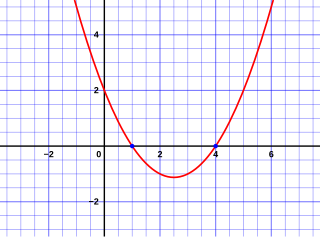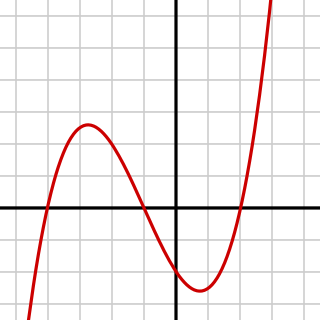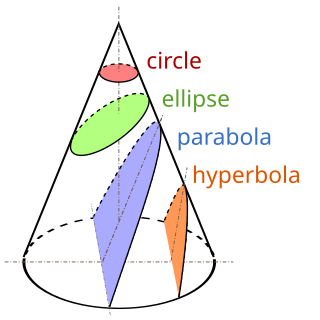History
Vieta jumping is a classical method in the theory of quadratic Diophantine equations and binary quadratic forms. For example, it was used in the analysis of the Markov equation back in 1879 and in the 1953 paper of Mills.
In 1988, the method came to the attention to mathematical olympiad problems in the light of the first olympiad problem to use it in a solution that was proposed for the International Mathematics Olympiad and assumed to be the most difficult problem on the contest: [2] [3]
- Let a and b be positive integers such that ab + 1 divides a2 + b2. Show that
 is the square of an integer. [4]
is the square of an integer. [4]
Arthur Engel wrote the following about the problem's difficulty:
Nobody of the six members of the Australian problem committee could solve it. Two of the members were husband and wife George and Esther Szekeres, both famous problem solvers and problem creators. Since it was a number theoretic problem it was sent to the four most renowned Australian number theorists. They were asked to work on it for six hours. None of them could solve it in this time. The problem committee submitted it to the jury of the XXIX IMO marked with a double asterisk, which meant a superhard problem, possibly too hard to pose. After a long discussion, the jury finally had the courage to choose it as the last problem of the competition. Eleven students gave perfect solutions.
Among the eleven students receiving the maximum score for solving this problem were Ngô Bảo Châu, Ravi Vakil, Zvezdelina Stankova, and Nicușor Dan. [5] Emanouil Atanassov (from Bulgaria) solved the problem in a paragraph and received a special prize. [6]

In mathematics, a Diophantine equation is an equation, typically a polynomial equation in two or more unknowns with integer coefficients, for which only integer solutions are of interest. A linear Diophantine equation equates to a constant the sum of two or more monomials, each of degree one. An exponential Diophantine equation is one in which unknowns can appear in exponents.
In mathematics, a polynomial is a mathematical expression consisting of indeterminates and coefficients, that involves only the operations of addition, subtraction, multiplication, and positive-integer powers of variables. An example of a polynomial of a single indeterminate x is x2 − 4x + 7. An example with three indeterminates is x3 + 2xyz2 − yz + 1.

A Pythagorean triple consists of three positive integers a, b, and c, such that a2 + b2 = c2. Such a triple is commonly written (a, b, c), and a well-known example is (3, 4, 5). If (a, b, c) is a Pythagorean triple, then so is (ka, kb, kc) for any positive integer k. A primitive Pythagorean triple is one in which a, b and c are coprime (that is, they have no common divisor larger than 1). For example, (3, 4, 5) is a primitive Pythagorean triple whereas (6, 8, 10) is not. A triangle whose sides form a Pythagorean triple is called a Pythagorean triangle and is a right triangle.

Pell's equation, also called the Pell–Fermat equation, is any Diophantine equation of the form where n is a given positive nonsquare integer, and integer solutions are sought for x and y. In Cartesian coordinates, the equation is represented by a hyperbola; solutions occur wherever the curve passes through a point whose x and y coordinates are both integers, such as the trivial solution with x = 1 and y = 0. Joseph Louis Lagrange proved that, as long as n is not a perfect square, Pell's equation has infinitely many distinct integer solutions. These solutions may be used to accurately approximate the square root of n by rational numbers of the form x/y.
In algebra, a quadratic equation is any equation that can be rearranged in standard form as

In number theory, a Gaussian integer is a complex number whose real and imaginary parts are both integers. The Gaussian integers, with ordinary addition and multiplication of complex numbers, form an integral domain, usually written as or

In elementary algebra, the quadratic formula is a formula that provides the two solutions, or roots, to a quadratic equation. There are other ways of solving a quadratic equation instead of using the quadratic formula, such as completing the square.

In mathematics, Galois theory, originally introduced by Évariste Galois, provides a connection between field theory and group theory. This connection, the fundamental theorem of Galois theory, allows reducing certain problems in field theory to group theory, which makes them simpler and easier to understand.

In algebra, a cubic equation in one variable is an equation of the form

In mathematics, a quadratic polynomial is a polynomial of degree two in one or more variables. A quadratic function is the polynomial function defined by a quadratic polynomial. Before the 20th century, the distinction was unclear between a polynomial and its associated polynomial function; so "quadratic polynomial" and "quadratic function" were almost synonymous. This is still the case in many elementary courses, where both terms are often abbreviated as "quadratic".
In mathematics, a quadratic form is a polynomial with terms all of degree two. For example,

In algebra, a quartic function is a function of the form
In mathematics, an algebraic equation or polynomial equation is an equation of the form , where P is a polynomial with coefficients in some field, often the field of the rational numbers. For example, is an algebraic equation with integer coefficients and

In number theory, a congruent number is a positive integer that is the area of a right triangle with three rational number sides. A more general definition includes all positive rational numbers with this property.

In mathematics, the Eisenstein integers, occasionally also known as Eulerian integers, are the complex numbers of the form

In elementary algebra, a trinomial is a polynomial consisting of three terms or monomials.

A Pythagorean quadruple is a tuple of integers a, b, c, and d, such that a2 + b2 + c2 = d2. They are solutions of a Diophantine equation and often only positive integer values are considered. However, to provide a more complete geometric interpretation, the integer values can be allowed to be negative and zero (thus allowing Pythagorean triples to be included) with the only condition being that d > 0. In this setting, a Pythagorean quadruple (a, b, c, d) defines a cuboid with integer side lengths |a|, |b|, and |c|, whose space diagonal has integer length d; with this interpretation, Pythagorean quadruples are thus also called Pythagorean boxes. In this article we will assume, unless otherwise stated, that the values of a Pythagorean quadruple are all positive integers.
In mathematics, a quadratic equation is a polynomial equation of the second degree. The general form is

A conic section, conic or a quadratic curve is a curve obtained from a cone's surface intersecting a plane. The three types of conic section are the hyperbola, the parabola, and the ellipse; the circle is a special case of the ellipse, though it was sometimes called as a fourth type. The ancient Greek mathematicians studied conic sections, culminating around 200 BC with Apollonius of Perga's systematic work on their properties.
In number theory, quadratic integers are a generalization of the usual integers to quadratic fields. Quadratic integers are algebraic integers of degree two, that is, solutions of equations of the form














